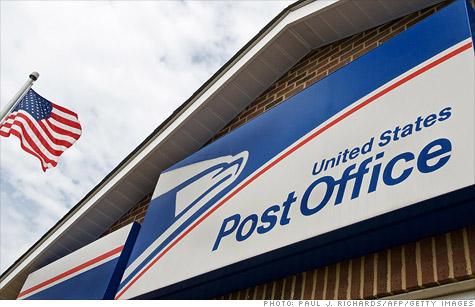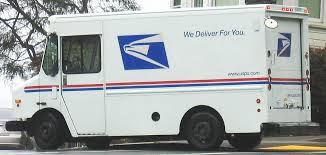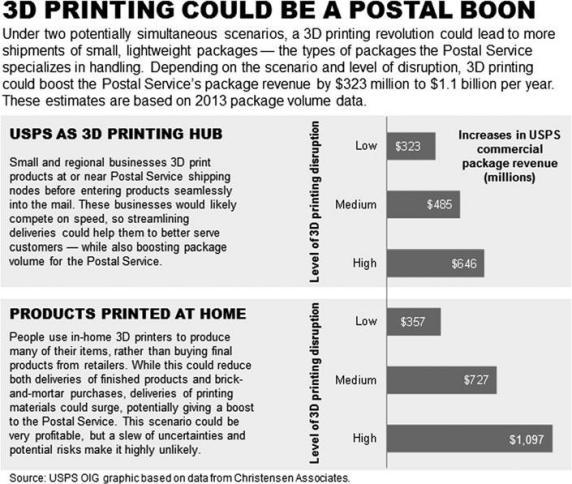“As 3D printing democratizes production and design, it could become a fierce engine of economic growth and job creation. By establishing a role in the 3D printing market, the Postal Service could put a compelling 21st-century twist on its historical mission to serve citizens and facilitate commerce.”
There’s a lot of weight to a recent study and consequent white paper produced by the United States Postal Service called “If It Prints, It Ships: 3D Printing and the Postal Service.” The sentence I was most preoccupied with while reading it though was that their study relied on the idea that a 3D printing revolution might take place. I think we are all fairly certain that train has left the station, barreling toward industrial revolution. This baby is taking off — it’s just a question of how far, and who is going to be affected. And it has the attention of the post office.
 There is mounting evidence that 3D printing has the potential to impact industry, manufacturing, and many different organizations. The USPS is interested in how this is going to affect them specifically, and how they can make it work for them economically, so they hired a consulting company, Laurits R. Christensen Associates, that specializes in the analysis of postal operations and complex postal data.
There is mounting evidence that 3D printing has the potential to impact industry, manufacturing, and many different organizations. The USPS is interested in how this is going to affect them specifically, and how they can make it work for them economically, so they hired a consulting company, Laurits R. Christensen Associates, that specializes in the analysis of postal operations and complex postal data.
Despite a constant chant in the background that the USPS is growing obsolete, going broke, or headed down the tubes, ubiquity is key, as is that reliance on the guy or gal who shows up six days a week at your mailbox. While my neighbors whine and complain when the USPS is 20 minutes off schedule, they are a constant daily presence regardless — and our mail-carrier does indeed know me, my family, and my immediate neighbors by name and face.
 With the statistics regarding our reliance on the USPS, it’s hard to imagine life without it. In fact, nearly two-thirds of lightweight, commercial packages are delivered to their final destination by the Postal Service, according to the data provided by the consultants. The Postal Service and 3D printing industry look good together on paper, and they are already working together whether they planned to or not. The question for the USPS is how to control the process for increased efficiency and consequent higher revenues. As far as delivery systems go, the USPS has a leg up on all the private companies:
With the statistics regarding our reliance on the USPS, it’s hard to imagine life without it. In fact, nearly two-thirds of lightweight, commercial packages are delivered to their final destination by the Postal Service, according to the data provided by the consultants. The Postal Service and 3D printing industry look good together on paper, and they are already working together whether they planned to or not. The question for the USPS is how to control the process for increased efficiency and consequent higher revenues. As far as delivery systems go, the USPS has a leg up on all the private companies:
- They offer daily service, six days a week, no matter what, practically everywhere.
- They have the ability to handle large volumes of lightweight packages and are dedicated to going back to areas daily, despite cost effectiveness or how many packages happen to be on one route.
- The USPS is contracted by private firms, ironically, anyway, as the final delivery system.
A major part of the efficiency plan for increasing income from 3D printing is that the USPS would coordinate with 3D printing service bureaus and work logistically as a 3D printing hub.
 It’s been pointed out that if we all become too equipped, skilled, and savvy in performing 3D printing at home, that’s going to be ‘disruptive’ to retail shops, e-commerce, and you guessed it, the post office. If you’ve got a one-stop-shop going on in your garage or home office, that’s cutting out more than one entity already. The saving grace for the USPS in that scenario would be that the USPS would still have the honor of delivering all the supplies we need for our 3D printers, and that’s actually a massive and profitable scenario for them, as it could lead to an increase of up to 28 percent. That’s assuming we don’t stop at a store on the way home and pick up supplies though.
It’s been pointed out that if we all become too equipped, skilled, and savvy in performing 3D printing at home, that’s going to be ‘disruptive’ to retail shops, e-commerce, and you guessed it, the post office. If you’ve got a one-stop-shop going on in your garage or home office, that’s cutting out more than one entity already. The saving grace for the USPS in that scenario would be that the USPS would still have the honor of delivering all the supplies we need for our 3D printers, and that’s actually a massive and profitable scenario for them, as it could lead to an increase of up to 28 percent. That’s assuming we don’t stop at a store on the way home and pick up supplies though.
We also need to consider that while we can’t see the future, at this time, it seems unlikely that folks are going to be 3D printing every one of their household needs, rather than running to Wal-Mart. With people doing more 3D printing, whether at home or receiving items through the mail, either scenario represents an income increase for the USPS, but as they well know, it all relies on the network they have set up to capture this income. Without a structure in place, many dollars could slip through the cracks. They will need:
- Service frequency
- Delivery points
- Tracking and tracing services
- Pick-up options
Several things would be needed for the USPS to cash in on this ‘possible’ revolution. First, they need to get behind keeping American 3D printing companies in the US, manufacturing in the US, and shipping in the US
The next idea is that the post office needs to attempt to assume an ‘intermediate role’ where they become a part of the 3D printing process, as the deliverer that the user is directed to — in the same vein that 3D users create their designs and then go to a service center such as Shapeways to have their designs 3D printed and mailed to them. If the USPS could be the go-to in that process, there’s another huge opening for income.
One last and interesting idea is that the USPS has large warehouses with unused space. Potentially, they could put that space to work for them by renting it out to 3D printing businesses with large machines. That would certainly put new meaning into the idea of a mailing hub, as they would be right on the premises for mailing items out. With 60 million square feet of excess space nationwide, you have to wonder what they are waiting for.
Time and data will be the indicators as to how the USPS keeps up with the competition and gets their foot in the door to make bank on 3D printing. What are your thoughts on these ideas regarding the 3D printing industry and how it might affect the USPS? Share with us in the USPS 3D Printing forum at 3DPB.com.
Subscribe to Our Email Newsletter
Stay up-to-date on all the latest news from the 3D printing industry and receive information and offers from third party vendors.
Print Services
Upload your 3D Models and get them printed quickly and efficiently.
You May Also Like
Creality To Go Public
Creality is one of the largest 3D printing companies in the world. It probably ships more 3D Printers than anyone else. In a competitive market, the company has gone from...
Chitu Systems and the FilaPartner E1: “Moisture Control for Better Prints”
Moisture may not sound like a big deal, but in FDM 3D printing, it can ruin a print. Filaments absorb water from the air, and once that moisture hits the...
3D Printing News Briefs, July 31, 2025: Falcon A1 Pro Launch, Kickstarter 3D Printer, & More
Today’s 3D Printing News Briefs is all about new products! We’ll tell you about some new components and machines related to additive, as well as a new 3D printer on...
Singapore’s Famous Merlion Statue Now a 3D Printed Toy Made From Plastic Bottles
Singapore’s iconic Merlion, a half-lion, half-fish statue by the waterfront at Merlion Park, is a favorite with both locals and tourists. Now, Singapore design brand Uniplay (a sustainable art toy...






























